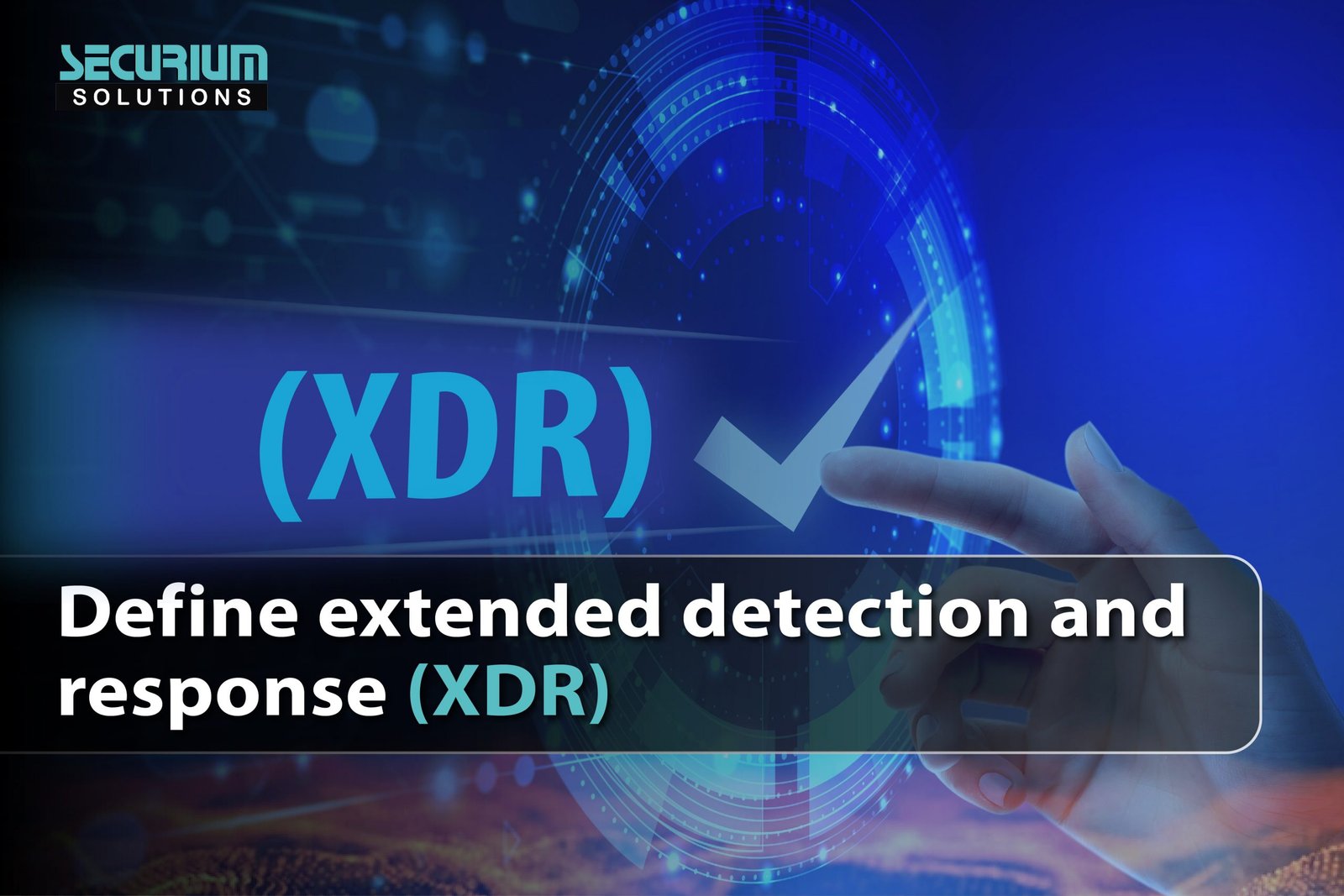Jan 4, 2023 / By Securium Solutions
In the current digital landscape, organizations face an increasing number of cyber threats, making it imperative to adopt a robust cybersecurity solution. A single security solution is no longer sufficient in detecting and preventing cyber threats, leading to the need for a more comprehensive approach. This is where Extended Detection and Response (XDR) comes in.
What is Extended Detection and Response (XDR)?
If we Define Extended Detection and Response (XDR) is a security approach that leverages advanced technologies and machine learning to detect, analyze, and respond to cyber threats across multiple attack vectors, including endpoints, networks, email, and cloud environments. The main objective of XDR is to provide a complete and centralized view of the organization’s security posture, thereby enabling faster and more effective threat detection and response.
XDR solutions integrate and automate various security technologies such as endpoint protection, network security, and threat intelligence, to provide a unified security architecture. By integrating various security technologies, XDR provides a comprehensive view of the organization’s security posture, thereby improving the accuracy and speed of threat detection and response.
How Does XDR Work?
XDR solutions work by collecting and analyzing data from multiple sources and creating a centralized repository of security-related information. This information is then analyzed by machine learning algorithms to identify patterns and anomalies that could indicate a potential cyber threat.
Once a threat is detected, XDR solutions provide a complete and detailed analysis of the threat, including its origin, impact, and potential mitigation strategies. This information is then used to automate the response process, reducing the time and effort required to respond to the threat.
For example, if a malware attack is detected on an endpoint, the XDR solution will immediately isolate the infected device and contain the spread of the malware. The XDR solution will also provide information on the origin of the malware and its potential impact, enabling the organization to quickly respond and mitigate the threat.
Why is XDR Important?
In today’s complex threat landscape, cyber threats can originate from multiple sources and attack vectors. Traditional security solutions, such as antivirus and firewalls, are no longer sufficient in detecting and preventing cyber threats.
Extended Detection and Response (XDR) provides a comprehensive view of the organization’s security posture, enabling faster and more effective threat detection and response. By automating the response process, XDR helps organizations save time and effort, allowing security teams to focus on more critical tasks.
XDR also helps organizations stay ahead of the ever-evolving threat landscape. By integrating multiple security technologies and leveraging machine learning, XDR solutions can quickly adapt to new threats, ensuring that organizations are always protected against the latest cyber threats.
Benefits of Extended Detection and Response (XDR)
Comprehensive Threat Detection: XDR solutions provide a comprehensive view of the organization’s security posture, enabling faster and more effective threat detection across multiple attack vectors, including endpoints, networks, email, and cloud environments.
Automated Response: XDR automates the response process, reducing the time and effort required to respond to cyber threats. This allows security teams to focus on more critical tasks and ensures that organizations are always protected against the latest cyber threats.
Integration of Security Technologies: XDR integrates multiple security technologies, including endpoint protection, network security, and threat intelligence, to provide a unified security architecture. This enhances the accuracy and speed of threat detection and response.
Improved Visibility: XDR provides a centralized repository of security-related information, enabling organizations to quickly identify and respond to potential threats. This improved visibility also enables organizations to make informed security decisions based on accurate and up-to-date information.
Cost Savings: XDR automates the response process and integrates multiple security technologies, reducing the need for manual intervention and separate security solutions. This results in cost savings for organizations and enables them to maximize the value of their security investments.
Continuous Protection: XDR leverages machine learning algorithms to continuously monitor the organization’s security posture and quickly adapt to new threats. This ensures that organizations are always protected against the latest cyber threats and helps them stay ahead of the ever-evolving threat landscape.
Conclusion
In conclusion, Extended Detection and Response (XDR) is a comprehensive security approach that leverages advanced technologies and machine learning to detect, analyze, and respond to cyber threats across multiple attack vectors. By providing a centralized view of the organization’s security posture and automating the response process, Extended Detection and Response (XDR) enables organizations to stay ahead of the ever-evolving threat landscape and ensure the protection of their critical assets.
Author
Vineet Singh
Securium Solution Cyber Security Analyst




